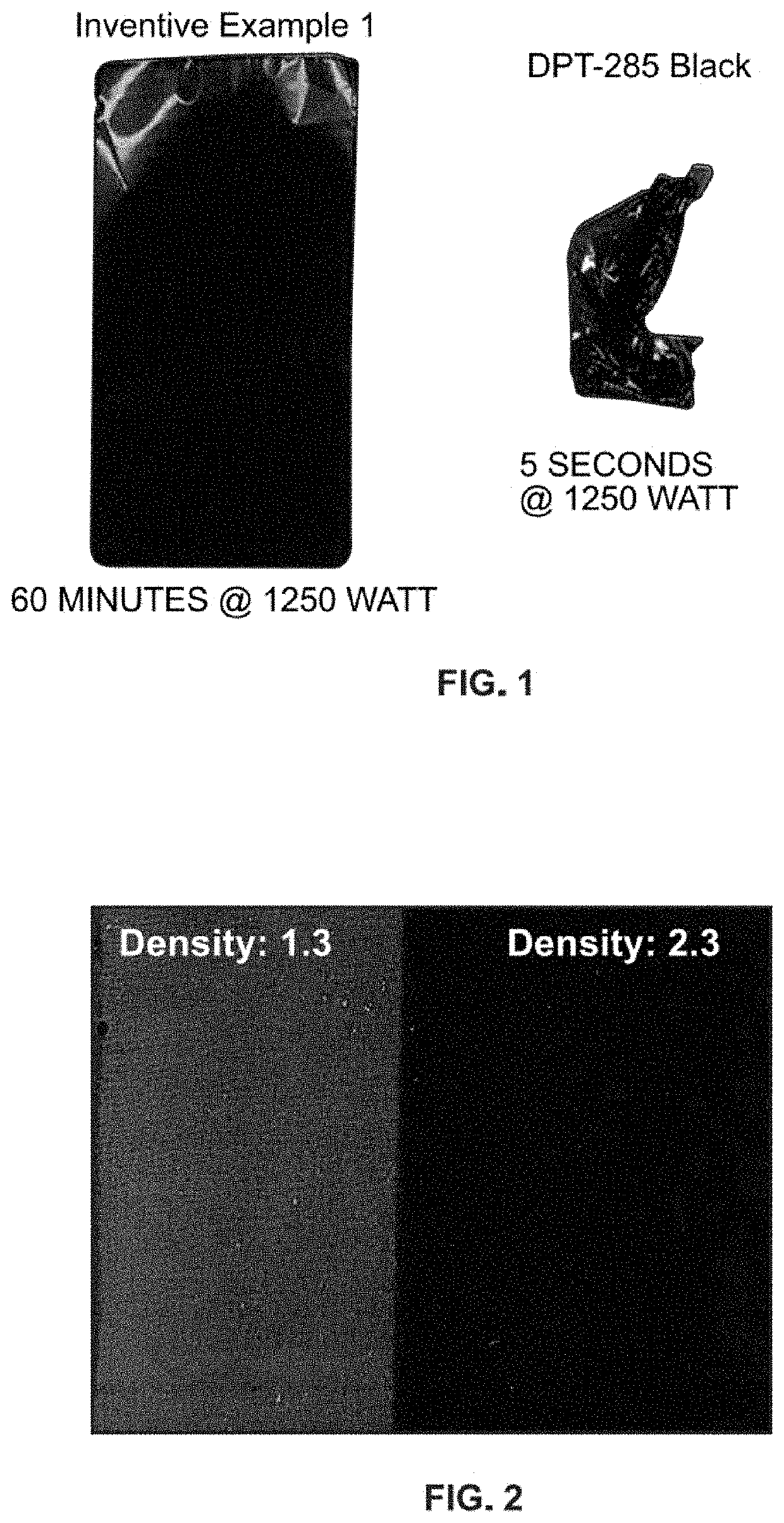Microwavable solvent-based packaging ink composition
a technology of solvent-based packaging and composition, which is applied in the direction of packaging, inks, printing, etc., can solve the problem of not preventing a safety hazard
- Summary
- Abstract
- Description
- Claims
- Application Information
AI Technical Summary
Benefits of technology
Problems solved by technology
Method used
Image
Examples
examples
[0085]The following examples illustrate specific aspects of the present invention and are not intended to limit the scope thereof and should not be construed as limiting.
[0086]Examples 1-6 are ink formulations within the description of the present disclosure that include Mogul E carbon black, nitrocellulose resins, solvent mixtures, and polyurethane resins, among others. Examples 7-12 are ink formulations within the description of the present disclosure that include Raven® 1180 carbon black, nitrocellulose resins, solvent mixtures, and polyurethane resins, among others.
[0087]Ink compositions were prepared by grinding the carbon black pigment in a media mill with nitrocellulose resin and solvents to form a pigment dispersion. Separately, the other components of the inks (e.g., the polyurethane resins, SMA resin, additives, some solvent) are mixed together to form a varnish. Inks are obtained by mixing the pigment dispersion with the varnish.
[0088]
Inventive Example 1Materialwt %Normal...
PUM
| Property | Measurement | Unit |
|---|---|---|
| power output | aaaaa | aaaaa |
| RH | aaaaa | aaaaa |
| Tg | aaaaa | aaaaa |
Abstract
Description
Claims
Application Information
 Login to View More
Login to View More - R&D
- Intellectual Property
- Life Sciences
- Materials
- Tech Scout
- Unparalleled Data Quality
- Higher Quality Content
- 60% Fewer Hallucinations
Browse by: Latest US Patents, China's latest patents, Technical Efficacy Thesaurus, Application Domain, Technology Topic, Popular Technical Reports.
© 2025 PatSnap. All rights reserved.Legal|Privacy policy|Modern Slavery Act Transparency Statement|Sitemap|About US| Contact US: help@patsnap.com

